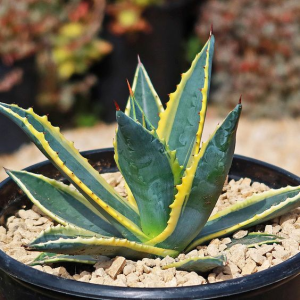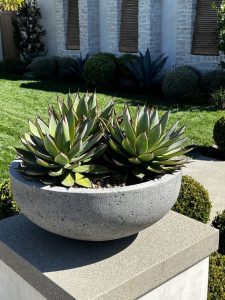- English
- Chinese
- French
- German
- Portuguese
- Spanish
- Russian
- Japanese
- Korean
- Arabic
- Irish
- Greek
- Turkish
- Italian
- Danish
- Romanian
- Indonesian
- Czech
- Afrikaans
- Swedish
- Polish
- Basque
- Catalan
- Esperanto
- Hindi
- Lao
- Albanian
- Amharic
- Armenian
- Azerbaijani
- Belarusian
- Bengali
- Bosnian
- Bulgarian
- Cebuano
- Chichewa
- Corsican
- Croatian
- Dutch
- Estonian
- Filipino
- Finnish
- Frisian
- Galician
- Georgian
- Gujarati
- Haitian
- Hausa
- Hawaiian
- Hebrew
- Hmong
- Hungarian
- Icelandic
- Javanese
- Kannada
- Kazakh
- Khmer
- Kurdish
- Kyrgyz
- Latin
- Latvian
- Lithuanian
- Luxembou..
- Macedonian
- Malagasy
- Malay
- Malayalam
- Maltese
- Maori
- Marathi
- Mongolian
- Burmese
- Nepali
- Norwegian
- Pashto
- Persian
- Punjabi
- Serbian
- Sesotho
- Sinhala
- Slovak
- Slovenian
- Somali
- Samoan
- Scots Gaelic
- Shona
- Sindhi
- Sundanese
- Swahili
- Tajik
- Tamil
- Telugu
- Thai
- Ukrainian
- Urdu
- Uzbek
- Vietnamese
- Welsh
- Xhosa
- Yiddish
- Yoruba
- Zulu
- Kinyarwanda
- Tatar
- Oriya
- Turkmen
- Uyghur

Na-ama ama na nnukwu ụlọ na akụnụba bara uru bụ agati. Plant development and management take great attention on its pace of expansion. Many elements influence agave’s pace of growth: environmental conditions, type of soil, water availability, light, and farming practices.

Agave okirikiri nke mmepe
Agave’s typical extended development cycle consists of many basic phases:
Site na mkpụrụ germination, agast seedlings ga-eto ngwa ngwa n'okpuru gburugburu kwesịrị ekwesị. Ofdị Mkpụrụ na gburugburu ebe obibi ga-ekpebi ogologo oge nke germination na-adịkarị - ọtụtụ ọnwa ruo otu afọ. Seedlings ga - emepụta mpempe akwụkwọ nke ahịhịa a, nke ga - eweta ntọala maka mmụba ọzọ.
Ọ na-adịgide ọtụtụ afọ, nke a bụ isi ogbo nke agave. Osisi ahụ ga na-eto eto akwụkwọ ya ma mepụta roset mpempe akwụkwọ na-eme n'oge a. Ihe ndị dị ka ọkụ, mmiri, na ọnọdụ okpomọkụ na-emetụta afọ na ike mmepe n'oge ịgbasawanye n'oge a na-agbasa. Agave nwere ike itolite ogologo akwukwo ya site na 10-20 cm kwago na onodu oma; N'ọnọdụ ọjọọ, nke a nwere ike jiri nwayọ nwayọ.
Agave na-ewe ọtụtụ afọ iji ruo na ogbo ahụ, ihe karịrị afọ iri. Oge a bụ nke ikpeazụ nke ihe ọkụkụ. Ọtụtụ mgbe na-abanye na senacence ogbo na iji nwayọọ na-anwụ na nke nta na-egbu oge, ndị tozuru okè ga-amalite iwepụta akụ ifuru. Ọtụtụ mgbe na-egosi njedebe nke usoro ndụ, ntoputa nke akụ ifuru na usoro ifuru na-emetụta mmepe nke osisi.
Calculating the agave’s growth rate
Agave’s growth rate varies according on the type and surroundings. Generally speaking, agave leaves develop somewhat slowly. Agave leaves could grow 10–20 cm annually under appropriate growth circumstances. varying agave cultivars do, however, have somewhat varying rates of growth. As a result:
Ọtụtụ mgbe na-egosi ọnụego ngwa ngwa, agaivana (nnukwu agave) n'okpuru ọnọdụ ikuku kwesịrị ekwesị, ọ nwere ike welite ogologo akwukwo ahụ n'akụkụ 30 ruo 50 cm kwa afọ. Agave America bụ nhọrọ a ma ama na usoro odida obodo n'ihi ọnụego mmepe.
Ihe eji eme ihe maka tequila, agave tequilana (agave tequilana (nke na-acha anụnụ anụnụ) na-eto nwayọ. Ọtụtụ mgbe, itozu oke azụmahịa na-abịa afọ asaa ruo afọ iri. Ndị ji nwayọọ na-eme ka ụdị a na-eme ka nsogbu a chịkọta shuga ọzọ, dabara adaba maka ịme ọmarịcha tequila.
AGAVIFE: ụdị akwụkwọ mgbasa akwụkwọ a na-agbadata nwayọ. Ọ na-erukarị eru maka ala kpọrọ nkụ na ogbenye, ọ na-egosikwa mmegharị dị ukwuu gburugburu ebe obibi.
elements influencing agave’s development pace
Many elements influence the agave’s growth rate: environmental conditions, type of soil, water availability, light conditions and farming technique.
Ọnọdụ nke gburugburu ebe obibi
Usually suited to tropical and subtropical conditions, agave is a drought-tolerant plant. The range of optimal growing temperature is 20–30°C. Agave’s growth rate will be much slowed down in cold climes below this temperature range, and it may even lead to plant frostbite. Furthermore influencing the plant’s development are too high or low temperatures, therefore it is essential to make sure the temperature falls within the suitable range.
Agave can survive in dry conditions, although little dampness promotes plant development. Under a long-term drought, agave’s growth rate could slow down and the plant might even stagnate. A moderate humidity may boost plant development rate and help them to flourish normally.
Agave na-adabere na ọkụ zuru ezu maka photosynthesis na ezigbo mmepe. Imirikiti ụdị agave dị mma maka na-eto n'okpuru anwụ zuru oke. Ìhè ezughi oke ga-agbadata n'ike mmepe nke osisi ma mee ka akwukwo a na-acha odo odo, ya mere imebi ọnọdụ n'ozuzu osisi.
Ofdị ala
Agave chọrọ mmiri dị ukwuu site n'ala. Ezigbo mmepe nke osisi na-adabere na ime nri, ala nke ọma. Mmiri gbakọtara na ụrọ ma ọ bụ ala nwere ike iduga na mgbọrọgwụ na-emetụta ike. May nwere ike iji ala aja nwere ezigbo igbapu iji gbaa ezigbo mmepe nke agave ume.
Agave dị ka ihe ruru eru maka ala nke PH dị n'etiti 6.0 na 8.0. Ala acidic ga-egbochi nri osisi na-amịpụta ma gbanwee ọrụ nke mmepe. Inggbanwe uru ala nke ala nwere ike inyere gị aka ịmepụta ebe obibi kwesịrị ekwesị maka osisi ma bulie ọrụ nke mmepe.
Mmiri mmiri
Agave is drought-tolerant and requires not regular irrigation. Root rot and a poor plant’s health might result from overwatering. Appropriately lowering the frequency of watering in dry conditions may help plants to become drought tolerant and encourage deep development of their roots. The plant stays healthily with a somewhat limited water source.
Earves na-agakarị n'ụzọ dị n'etiti mmiri na oge ọkọchị na gburugburu eke. Osisi na-eto nwayọ n'oge ọkọchị ma ngwa ngwa n'oge udu mmiri. Osisi nke nwere ike ime mgbanwe na mgbanwe a nwere ike ime ka uto na oge udu mmiri ma chekwaa otu uto na-eto eto n'ọtụtụ.
Gburugburu ebe obibi
Awaves na-achọkarị anwụ na-ezuru iji na-enwe ezigbo mmepe nke anwụ zuru oke na ọkara-ndò. Osisi nwere ike itinye aka na photosynthesis na ọkụ zuru oke, ya mere na-enye nkwalite. Enwere ike belata uto nke osisi nwere ike belata na ọnọdụ nke ndo, yabụ na-emetụta mmepe nke akwụkwọ na izugbe ọnọdụ nke osisi.
Njikwa na ịkọ
Fertilisation: The right fertilisation will speed agave’s development. Fertilisers must have nutrients such nitrogen, phosphorous, and potassium if we are to grow plants. Excessive fertilisation, however, can harm health and result in inadequate plant development. Depending on the growth stage and demands of the plant, the correct dosage of fertiliser will maximise its rate of development.
Ugboro ugboro na-enye aka na-enyere aka ịgbalite mmepe nke ọhụrụ. Prins na-enyekwa osisi ahụ anya dị mma na ike. Eliminating akwụkwọ ma ọ bụ mebiri emebi na-enyere osisi aka iji obere ume ma gbaa ume mmepe nke akwụkwọ ọhụrụ.
Usoro iji bulie ọnụego ubi
Ndị na-akụ ahịhịa nwere ike ịbawanye ọnụego ha site na iji usoro ndị a:
Mepụta ebe obibi dị mma.
Gbaa mbọ dị n'aka na agav na-etolite na oke okpomọkụ iji gbochie nsogbu ihu igwe oyi na osisi. Na mpaghara Frigid, a nwere ike ịme ihe nchebe dị otú ahụ griin haus ma ọ bụ inye ndị ọzọ na-ekpo ọkụ.
Njikwa iru mmiri: Na akọrọ ọnọdụ, na-adabere iru mmiri nwere ike ịgba ezigbo osisi mmepe. Mosh mulch ma ọ bụ mmiri spraying ga-enyere aka ịzụlite iru mmiri gburugburu ebe obibi.
Họrọ ala kwesịrị ekwesị.
Select well-drained soil to prevent water accumulation’s effect on the roots. To increase drainage, one might add sand or another amendment to the soil.
Iji mee nkwa na ala dị n'ime ala kwesịrị ekwesị, gbanwee ya nke ya dabere na ihe ọkụkụ ahụ. Nri wayo ma ọ bụ fatịlaịza fatịlaịza ka ọ gbanwee ph of nke ala.
Na-enweta mmiri nri
Gbanwee ugboro ole ị na-agba dabere na gburugburu ebe obibi iji gbochie imebi ihe na mmebi. Ezigbo mmepe nke osisi ahụ na-adabere oge ọkọchị na-ezuru oke n'etiti ịgbara ala.
Inye ìhè nke ọma.
Gbaa mbọ hụ na agave na-enweta anwụ na-acha odo odo iji gbaa ezigbo photosynthesis na ọnụego mmepe. Na ndò, chee banyere iyigharị osisi ahụ ntụpọ ma ọ bụ na-agbakwunye ọkụ ọkụ na-agbanye ọkụ.
Ifatilaiza iji usoro sayensị.
Denye nri fatịlaịza ziri ezi dabere na ọkwa mmepe na ihe ọkụkụ na-egbochi nsonaazụ ya na njikọta njikọta siri ike nke ukwuu. Họrọ fatịpụrụla fatịpụrụla fatịlaịza na-ekwe nkwa na osisi na-enweta nri nri ogologo oge ọ chọrọ.
Punụ mgbe
Mgbe ị na-eme ihe mgbe niile na-enyere osisi aka ka ahụike ma na-akpali mmepe nke akwụkwọ ọhụrụ. Prin na-acha odo odo. Mgbe kwachaa, jiri ngwa dị nkọ, iji gbochie imebi ihe ọkụkụ ọzọ.

Agati‘s growing rate is a complicated process influenced by many elements. By knowing these influencing elements and using suitable optimisation techniques, the development rate and condition of agave may be much enhanced. Various agave varieties have distinct growing traits, hence they should be grown under the requirements of certain types. Agave may not only be beneficial in the ecology but also provide substantial financial rewards by means of scientific cultivation and maintenance.



